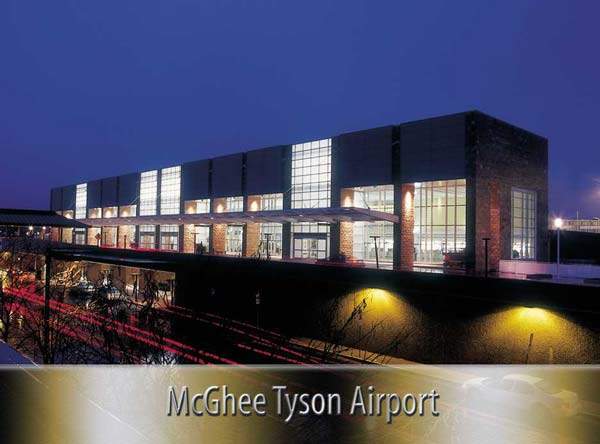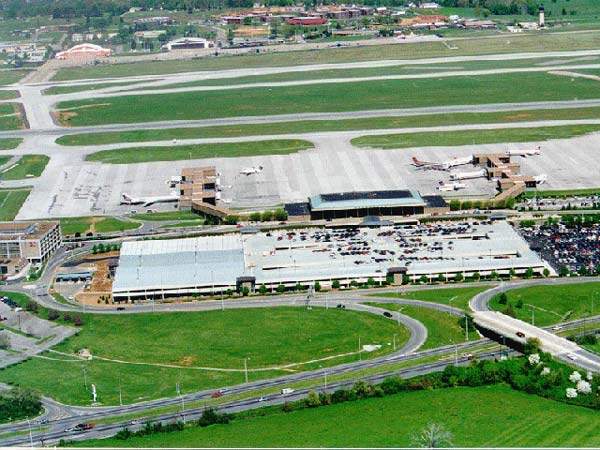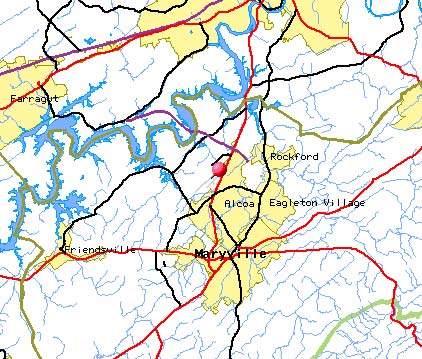The Metropolitan Knoxville Airport Authority recently announced the completion of a two-and-a-half year renovation and expansion project at McGhee Tyson Airport.
The airport is located 12 miles from Knoxville, Tennessee, USA. The facility has two 9,000ft parallel runways and services twelve major commercial airlines, totalling almost 1.8 million passengers in 1998.
PASSENGER TRAFFIC INCREASE
Increases in passenger traffic during the 1990s reinforced the need for a new terminal facility. Since commercial airlines introduced their low fare pricing structure at the end of the 1990s, the airport began to see a considerable increase in the number of passengers using it. In 1998, there was an increase of nearly 184,000 passengers (13%) over 1997 figures. This made 1998 the busiest year in the airport’s 60-year history. Passengers in 1998 totalled 1.62 million, marking the airport’s fourth consecutive year of steady growth. The facility is now attracting passengers not only from the Knoxville area, but throughout East Tennessee, Western Carolina and South Kentucky.
Another reason for the investment was the possibility (due to the airport’s strategic geographic position) to attract an increased number of business cargoes. Three of the nation’s most heavily travelled interstates converge in Knoxville and this junction means 53% of the nation’s marketplace is within a 650-mile radius of Knoxville. The city is also located at the head of the Tennessee river navigation channel and at the junction of the major east/west and north/south railway system.
PROJECT TIMESCALE
Construction began in 1998 and was completed in 2000.
KNOXVILLE AIRPORT PROJECT
The $72 million project included construction of a new concourse, new passenger gates, loading bridges, restrooms, seating, ticket counters, elevators, escalators, flight information displays and baggage belts. The project also included new gift shops and a restaurant.
The main challenge was to proceed with the construction while keeping the facility operational. The project involved demolishing more than half of the existing terminal building to create 140,000ft² of new space. Only the building’s exterior shell remained.
STRUCTURAL CHANGE
HNTB designed a new Y-shaped concourse to allow operations to be maintained throughout demolition and construction. A portion of the terminal above the ticketing area was demolished to allow for higher ceilings. The middle portion of the airport mezzanine level was cut away to allow the new high ceiling to lead into the concourse connection from the terminal. This step posed a construction challenge as the floor slabs and beams were cut away from existing structural columns. The contractor was required to install temporary cross braces between existing columns until the required stiffening steel was added to all remaining columns.
Evaluation of columns, bracing and roof members confirmed their safety during construction and after renovation was complete. To further ensure safe passage, construction areas were restricted from passenger movement throughout the mezzanine renovation phase.
Reflective of the nearby Great Smoky Mountain, the terminal renovation includes a 100ft-long mountain stream that is made up of four pools with granite weirs that produce a white water effect. McGhee Tyson’s interior makeover also provides additional ticket counter space, a single security check point, more passenger gates, expanded baggage handling facilities and passenger lounge areas.
LEAD CONTRACTORS
The construction manager for the project was a consortium of Rentenbach Company of Knoxville, Tennessee (Bovis, Inc of Nashville and Russell of Atlanta). The main architecture and engineering firm associated with the project was HNTB Corporation of Kansas City,USA.




